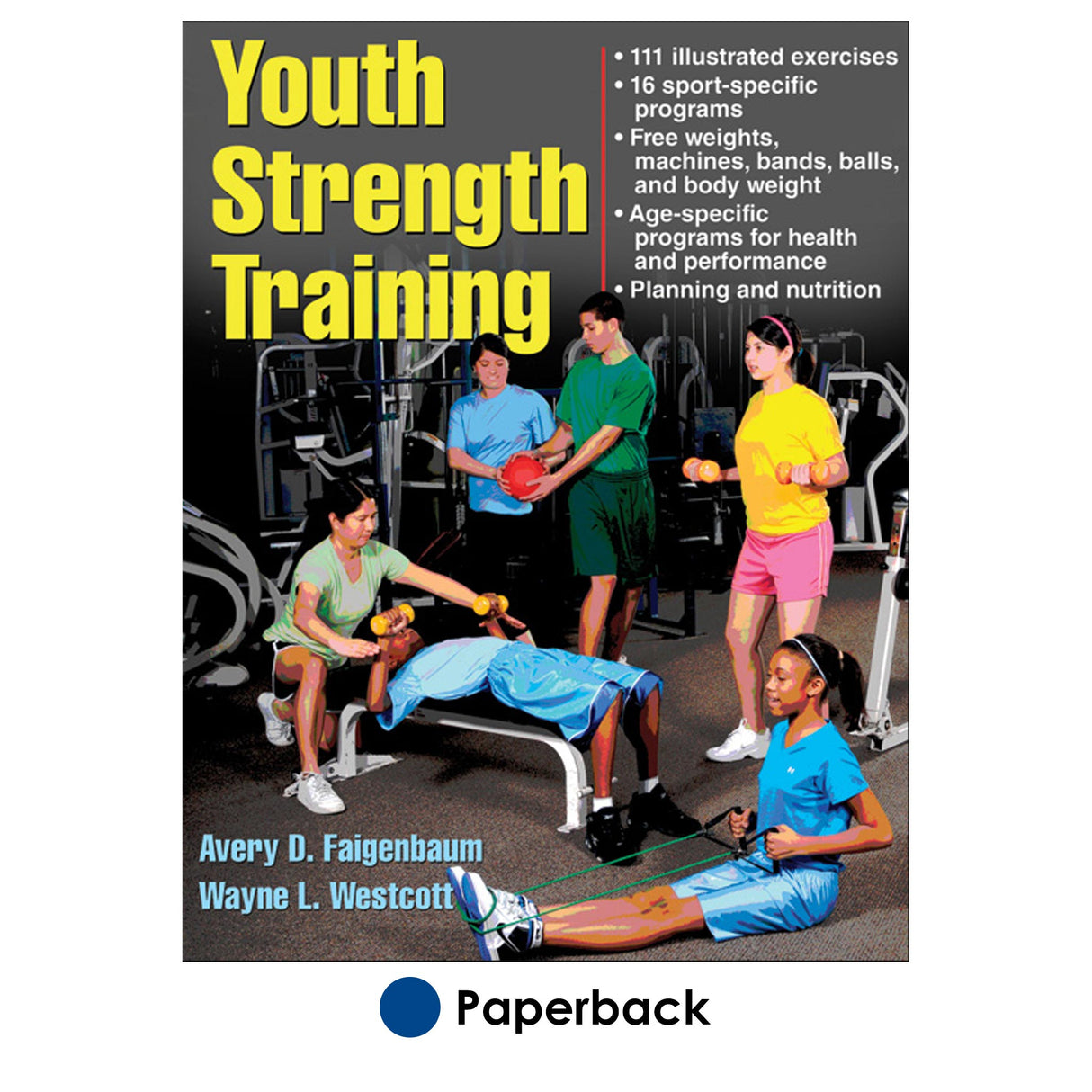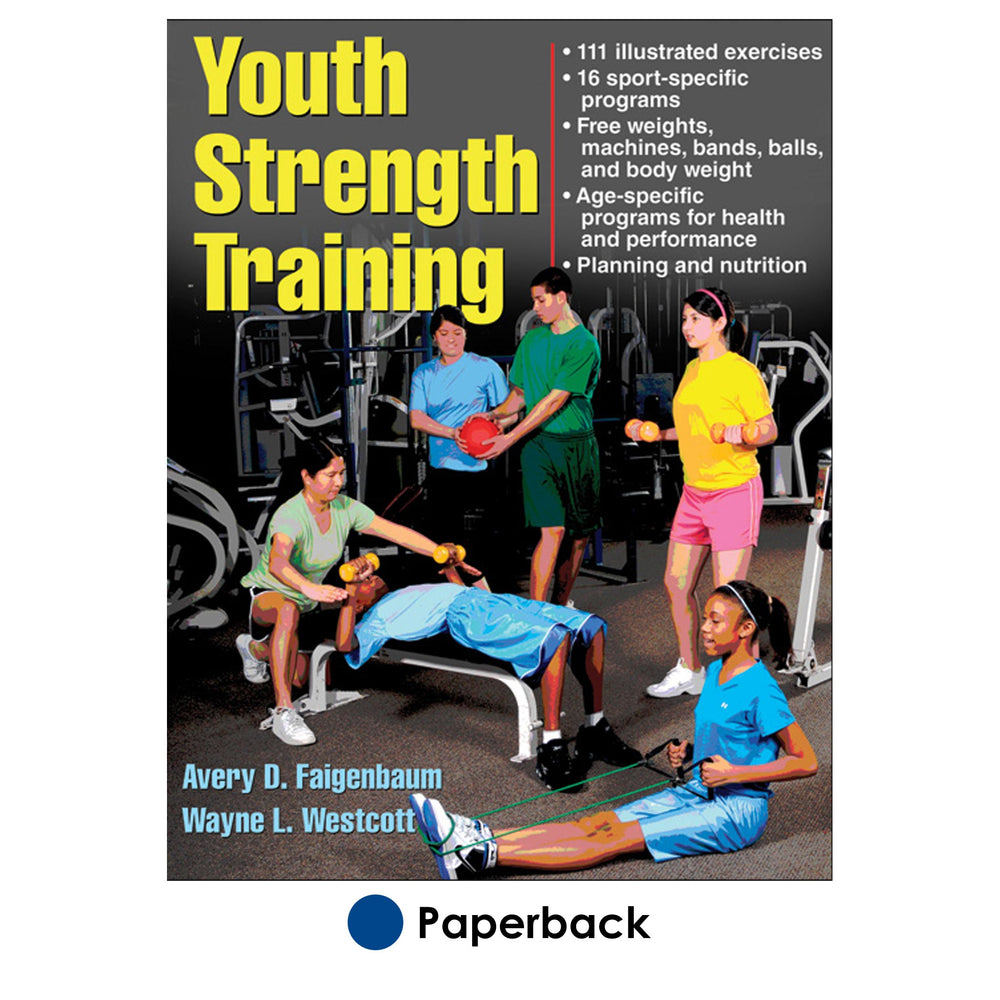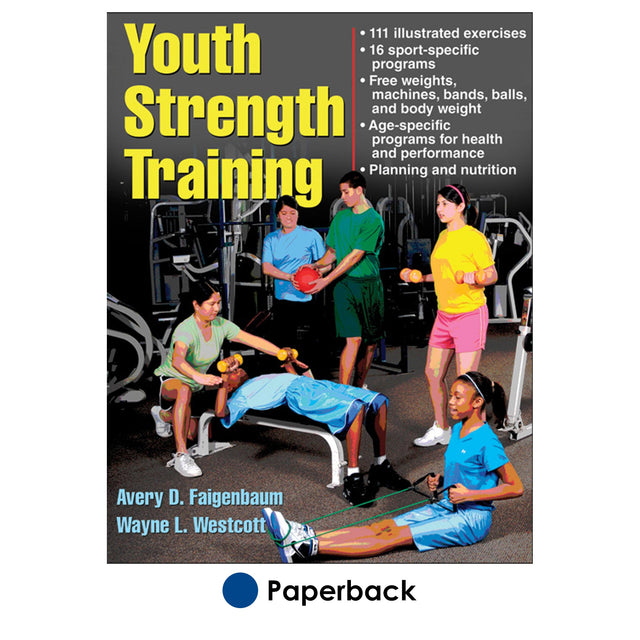Youth Strength Training
Programs for Health, Fitness, and Sport
Author: Avery Faigenbaum, Wayne Westcott
$29.95 USD
The benefits of strength training for youth are clearly documented. Yet teachers, fitness instructors, and youth coaches are often not sure how to proceed, and they end up watering down adult versions of strength-training programs.
That is definitely not the way to go. But authors Avery Faigenbaum and Wayne Westcott, with their 50 years of combined experience in teaching youth strength-training classes and coaching, can tell you the way to go—and back it with the most current research on instructional techniques and program design for youth.
Long recognized as leading authorities on strength training, Faigenbaum and Westcott guide you in designing efficient, enjoyable, and productive programs for kids of varying abilities in elementary school (ages 7 to 10), middle school (11 to 14), and high school (15 to 18). You will focus first on broad-based, balanced muscle development, and then move into comprehensive, sport-specific strength-training programs.
In addition, Youth Strength Training will teach you
- productive protocols for warming up and cooling down;
- procedures for enhancing joint flexibility;
- innovative ways to incorporate resistance exercises into physical education classes, sport practice sessions, and exercise facilities; and
- proper exercise technique for 111 resistance exercises using weight stack machines, free weights, medicine balls, elastic bands, and body-weight resistance.
Much has changed since the authors first wrote a book on strength training for youth, and those changes—including information in the areas of nutrition, hydration, and recovery to maximize the effects of strength training and minimize the risks of overtraining—are incorporated in this book. Additional changes, based on the authors' studies, are reflected in workout frequency, exercise repetitions, related training components, and other factors that affect program design and conditioning results. All programs were fashioned with the latest NASPE standards in mind.
Faigenbaum and Westcott have included new information on periodization and long-term planning, perceived exertion scale for youth, overtraining and undertraining, dynamic warm-ups and static stretches, new exercises, effective instruction of youth, and plyometrics.
Through strength training, kids as young as 7 can safely develop a strong musculoskeletal system that can help them improve their health and fitness and also withstand the rigors of sport participation.
Youth Strength Training is the definitive source to guide you in designing and overseeing the programs of the kids you work with, whether you're in a school, fitness center, or home setting. If you want to see high rates of strength development and spark a lifelong interest in strength-building activities, rely on Youth Strength Training.
Audience
Reference for physical education teachers and youth fitness leaders. Also a reference for children, parents, and coaches.
Foreword
Acknowledgments
Introduction
Part I Fitness Fundamentals
Chapter 1. Ready to Train
Strength Training Versus Weightlifting, Powerlifting, and Bodybuilding
FUNdamental Fitness
Muscles, Bones, and Connective Tissue
Program Assessment
Getting Ready
Summary
Chapter 2. Program Prescriptions
Training Guidelines
Program Considerations
Play Education
Summary
Chapter 3. Exercise Technique and Training Procedures
Understanding Children
Being a Teacher
Developing the Fitness Workout
Using Equipment Safely
Keeping It Progressive
Summary
Part II Exercises
Chapter 4. Free Weights
Training With Free Weights
Free-Weight Exercises
Summary
Chapter 5. Weight Machines
Training on Weight Machines
Weight Machine Exercises
Summary
Chapter 6. Elastic Bands and Medicine Balls
Training With Elastic Bands and Medicine Balls
Elastic Band Exercises
Medicine Ball Exercises
Summary
Chapter 7. Body-Weight Training
Using Body Weight as Resistance
Body-Weight Exercises
Summary
Part III Program Design
Chapter 8. General Preparation
Preparatory Conditioning
Training Youth
Dynamic Motivation
Summary
Chapter 9. Basic Strength and Power for Ages 7 to 10
Components of the Warm-Up and Cool-Down
Strength-Training Program
Strength-Training Exercises
Training Considerations
Summary
Chapter 10. Intermediate Strength and Power for Ages 11 to 14
Components of the Warm-Up and Cool-Down
Strength-Training Program
Machine Strength-Training Exercises
Medicine Ball Strength-Training Exercises
Training Considerations
Summary
Chapter 11. Advanced Strength and Power for Ages 15 to 18
Components of the Warm-Up and Cool-Down
Strength-Training Program
Machine and Free-Weight Strength-Training Exercises
Medicine Ball and Elastic Band Strength-Training Exercises
Training Considerations
Summary
Chapter 12. Sport-Specific Power and Strength for Young Athletes
Training for Sport Conditioning
Baseball and Softball
Basketball and Volleyball
Dancing and Figure Skating
Football and Rugby
Ice Hockey and Field Hockey
Soccer
Swimming
Tennis
Track: Sprints and Jumps
Track: Distance Running
Summary
Part IV Long-Term Planning and Nutritional Support
Chapter 13. Periodization and Recovery
Overreaching and Overtraining
Models of Periodization
Rest and Recovery
Long-Term Development
Summary
Chapter 14. Eating for Strength and Performance
Basics of Healthy Eating
Children's Nutritional Needs
Hydration
Snack Foods
Summary
Appendix A: Sample Workout Log
Appendix B: Suggested Readings
Index
About the Authors





